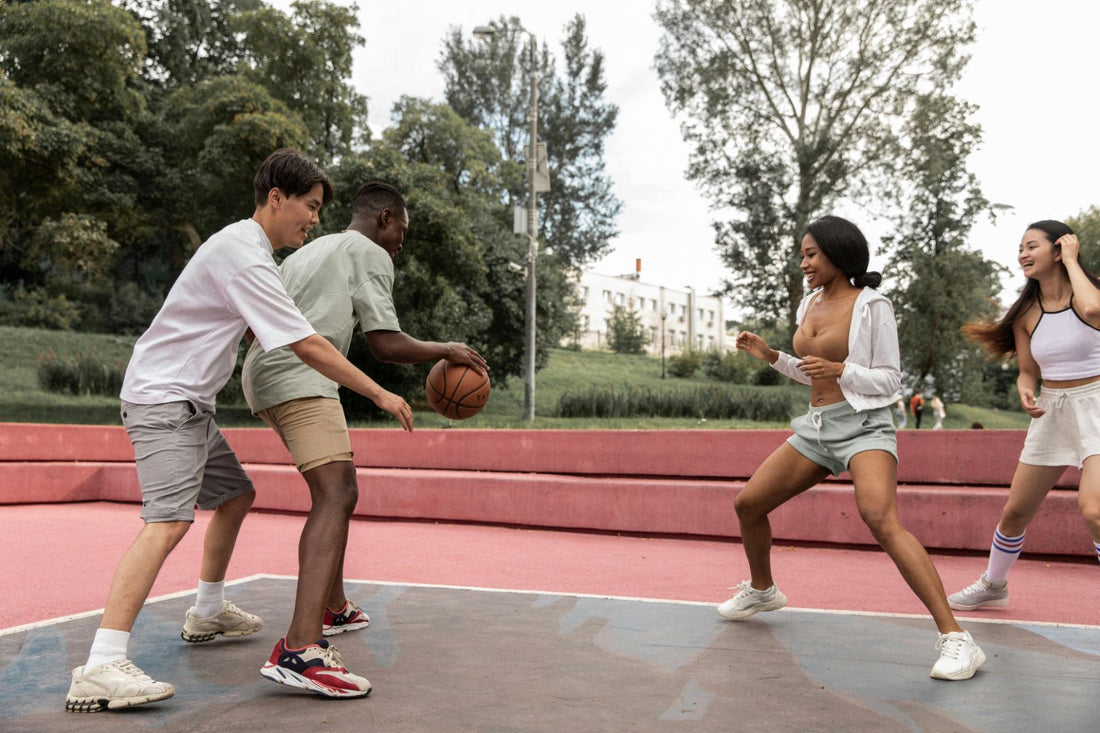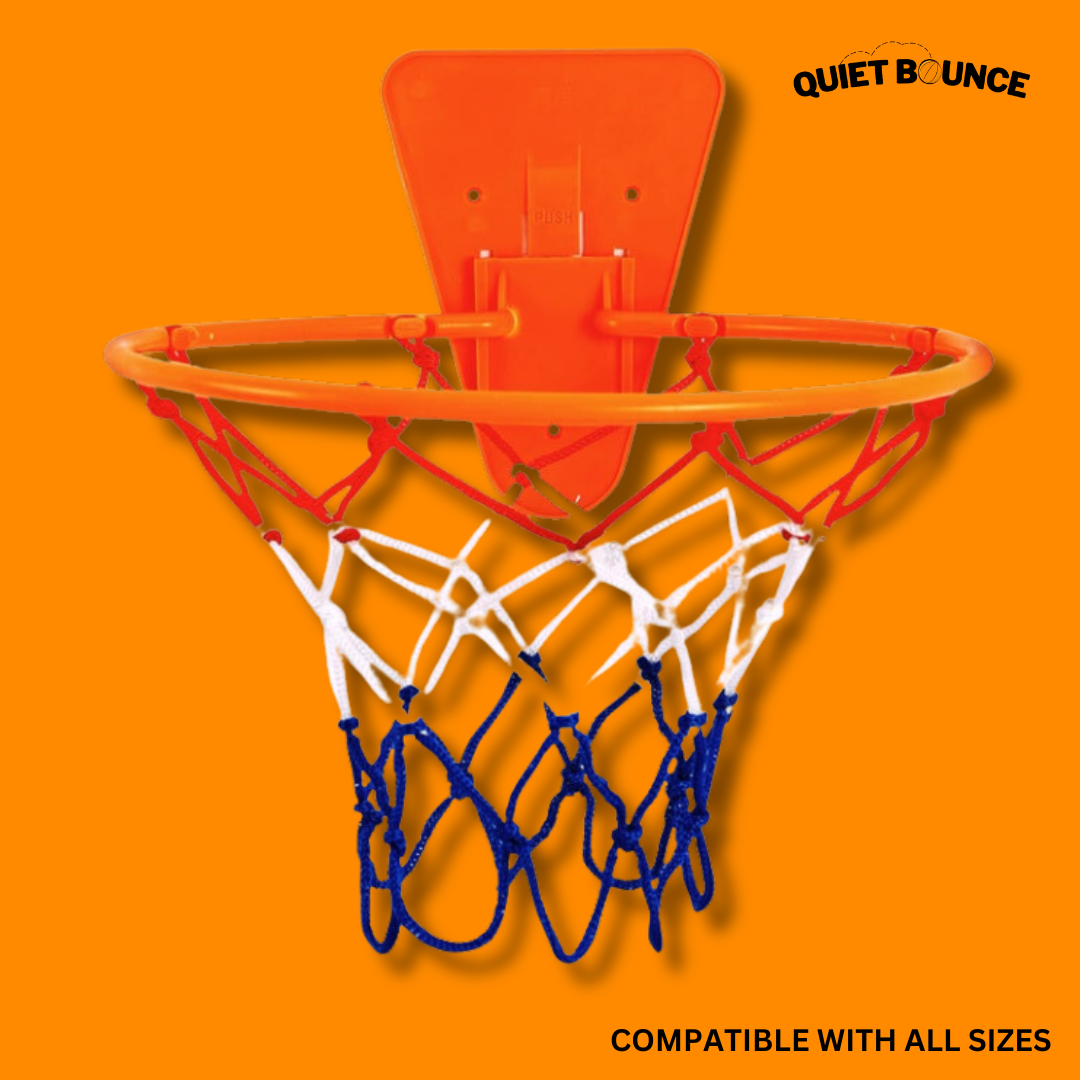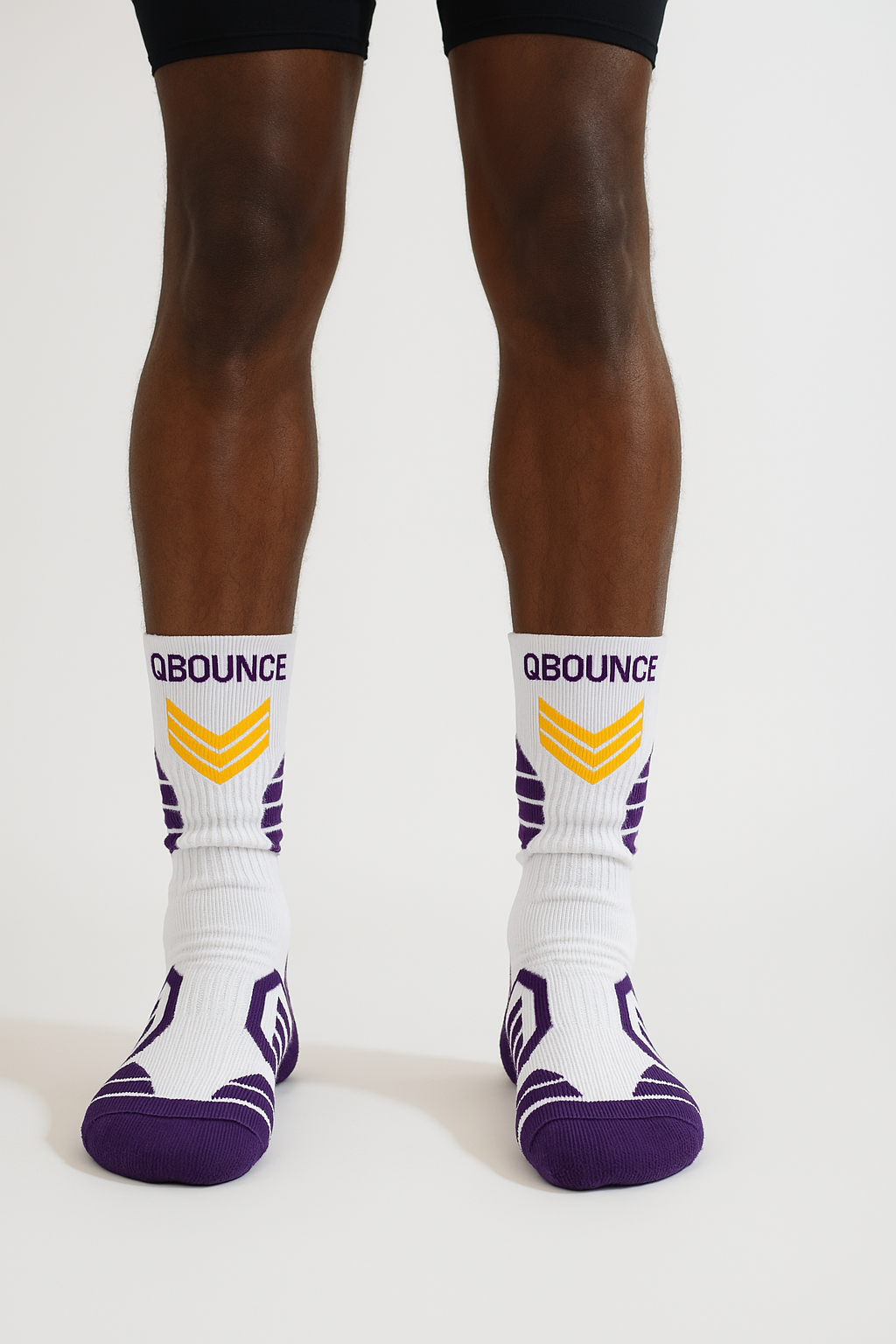
Running a Motion Offense in Youth Basketball
Share
Youth basketball is a fantastic opportunity for young athletes to develop skills, learn teamwork, and have fun on the court. And when it comes to offense, implementing a motion offense can be a game-changer.
During training, guide your players through drills, introducing the basic concepts of a good motion offense, which we’ll cover here. You can also demonstrate drills they can practice at home, outdoors, or indoors (such as with a basketball that bounces quietly). These drills should also support the fundamentals of a good motion offense.
Let’s explore the ins and outs of running a motion offense in youth basketball, from understanding its advantages to teaching specific strategies like the 1-3-1 motion offense. We'll also delve into variations of the motion offense and the fundamental rules to follow for success.
Advantages of a Motion Offense in Youth Basketball
Teaching your youth players how to execute an effective motion offense has numerous benefits, some of which you probably haven’t even considered. In reality, the mental, social, and physical skills they hone will serve them well both on and off the court. Here are some of the critical advantages for the individual players as well as the team as a whole:
- Player development: Running a motion offense can encourage players to develop fundamental basketball skills by demanding constant movement and involvement. This can help them become more well-rounded players.
- Teamwork & communication: Your players must work together, constantly moving and making quick decisions based on their teammates' movements and the defense. This can foster better chemistry, communication, and trust among the teammates.
- Adaptability: A motion offense offers flexibility to different situations. It allows players to read and react to the defense, making adjustments on the fly. This versatility can enable your team to exploit mismatches and adapt to various defensive strategies.
- Equal opportunities for all players: In a motion offense, every player can be involved in the offense. It ensures every player is included and marginalized, promoting inclusivity and equal participation. This can boost the team’s overall morale.
- Confusion for the defense: A well-executed motion offense can disrupt the defense's positioning and rotations. The constant movement, screens, and cuts can create open shooting lanes and backdoor opportunities, increasing your chances of scoring.
- Improved basketball IQ: Running a motion offense requires players to make quick decisions and understand spacing and timing. This increased basketball intelligence can translate to better overall game awareness and decision-making abilities.
- Engagement: A motion offense can make the game more fun for your players. Teamwork and constant movement create an exciting style of play, which can lead to increased enthusiasm, motivation, and, ideally, a lifelong love for the game.
How to Teach a 1-3-1 Basketball Motion Offense
To teach a 1-3-1 basketball motion offense to youth players, you should start by outlining the responsibilities of each position. Emphasize the importance of teamwork and communication, then explain the basic principles, such as spacing, ball movement, and player movement. For a more step-by-step approach, follow these general guidelines.
Positional Breakdown
Break down the offense by explaining each position's specific role in the 1-3-1 motion offense. Provide detailed instructions for the point guard, wings, high post, and low post players. Help your players understand their positioning, movements, and options within the offense.
Drills for Skill Development
Incorporate skill development drills that focus on the critical aspects of the 1-3-1 motion offense. These drills should enhance passing, cutting, screening, and decision-making skills. Try to simulate game situations so that executing the offense's principles becomes second nature to your players.
On-Court Demonstrations
Conduct on-court demonstrations to illustrate the 1-3-1 motion offense's movements and rotations visually. Walk your players through different scenarios, showing them how to react to defensive adjustments and exploit scoring opportunities. Encourage your players to participate and even ask questions for clarification.
Progressive Practice Sessions
Implement progressive practice sessions to introduce complexity and game-like situations gradually. Start with simple half-court scenarios before progressing to full-court drills and scrimmages. Gradually increase the speed and intensity of these practice sessions to simulate real-game conditions.
Game Strategy & Adjustments
Teach your players how to read the defense and make in-game adjustments within the 1-3-1 motion offense. Discuss strategies for attacking different defensive alignments, handling pressure, and exploiting defensive weaknesses. Help your players understand the importance of constant communication and teamwork to execute these adjustments.
Player Evaluation
Continuously evaluate your players' performance in the 1-3-1 motion offense. Provide constructive feedback and individualized coaching to help your players improve if they struggle with execution. Encourage your players to learn from their mistakes to understand better how their performance impacts the offense's success.
Game Implementation
Finally, implement the 1-3-1 motion offense in game situations. Reinforce the principles and strategies during actual games, providing guidance and feedback to your players as they execute the offense. Encourage your players to be confident, adaptable, and, most of all, to have fun.
Variations of the Motion Offense
The 1-3-1 motion offense is famous for youth basketball teams, but multiple other variations exist. Consider acquainting yourself with several different versions to give yourself and your team some flexibility. This can help you and your assistant coaches tailor an offense to suit your team’s strengths and style of play. Here are some common variations of the motion offense:
- 4-Out, 1-In Motion: In this variation, the offense utilizes four players positioned on the perimeter, with one player placed in the low post. The four perimeter players focus on spacing, cutting, and screening. At the same time, the low post player provides an inside scoring threat and can also facilitate ball movement through high-low passes.
- 5-Out Motion: The 5-out motion offense involves spreading all five players across the perimeter. This allows more opportunities for dribble penetration, drive-and-kick situations, and open three-point shots.
- Read & React Offense: This flexible motion offense emphasizes player movement, cutting, and passing based on specific reactions to defensive actions. It allows players to make decisions based on what the defense gives them, resulting in an adaptable style of play.
- Motion Weak/Strong Side: This variation focuses on creating imbalances on the court's weak or strong side. By shifting most offensive players to one side, the offense can create advantages and exploit defensive openings.
- Dribble Drive Motion: Players dribble to the basket to score or kick the ball out to open teammates for three-point shots. This aggressive dribble penetration collapses the defense and creates scoring opportunities.
- Modified Flex Offense: Combining elements of the traditional flex offense with motion principles, this variation involves continuous cutting, screening, and ball movement, emphasizing creating confusion and mismatches for the defense.
Fundamental Principles of a Solid Motion Offense
Certain vital principles always apply regardless of which motion offense you run. Here are some essential concepts you can encourage your players to practice at home and in training if they want to be effective within a motion offense:
- Constant movement: Standing still or being stagnant hinders the flow and effectiveness of the offense. Encourage your players to cut, screen, and relocate to create scoring opportunities and keep the defense off balance.
- Spacing: Players should maintain sufficient distance from one another to prevent overcrowding and facilitate ball movement. Adequate spacing allows for passing lanes and cutting opportunities.
- Read and react: Players must make quick decisions based on the defense's movements and positioning. This includes recognizing open teammates, making effective cuts, and exploiting defensive weaknesses.
- Ball movement: The ball should be constantly in motion, moving from player to player. Discourage excessive dribbling and encourage your players to make quick, decisive passes to keep the defense rotating.
- Screening & cutting: Effective screening creates open shots and drives opportunities. Simultaneously, cutting to the basket without the ball can create scoring chances and force the defense to react.
- Communication: Players should constantly call out screens, cuts, and open passing lanes. Clear and effective communication enhances teamwork and helps players make informed decisions on the court.
- Discipline: Players should resist the temptation to force shots or make rushed decisions. Encourage them to wait for open opportunities and make bright, calculated decisions based on the flow of the offense.
- Rebounding: Offensive rebounding provides second-chance opportunities and extra possessions and can demoralize the defense. Teach your players proper rebounding techniques and emphasize their roles in crashing the offensive boards.
- Transitioning to offense: Teach your players how to transition from defense to offense seamlessly. Emphasize the importance of quickly advancing the ball up the court, maintaining spacing, and initiating the motion offense in transition situations.
When choosing a variation of the motion offense for your youth basketball team, consider your players' skill level, athleticism, and IQ. Also, evaluate your team's strengths and weaknesses to determine which variation aligns best with their abilities.
Remember, implementing a motion offense requires patience, practice, and focus on player development. However, continual training and repetition will undoubtedly lead to improved court performance. So, emphasize skill development and teamwork, and watch as your team's motion offense levels up.




